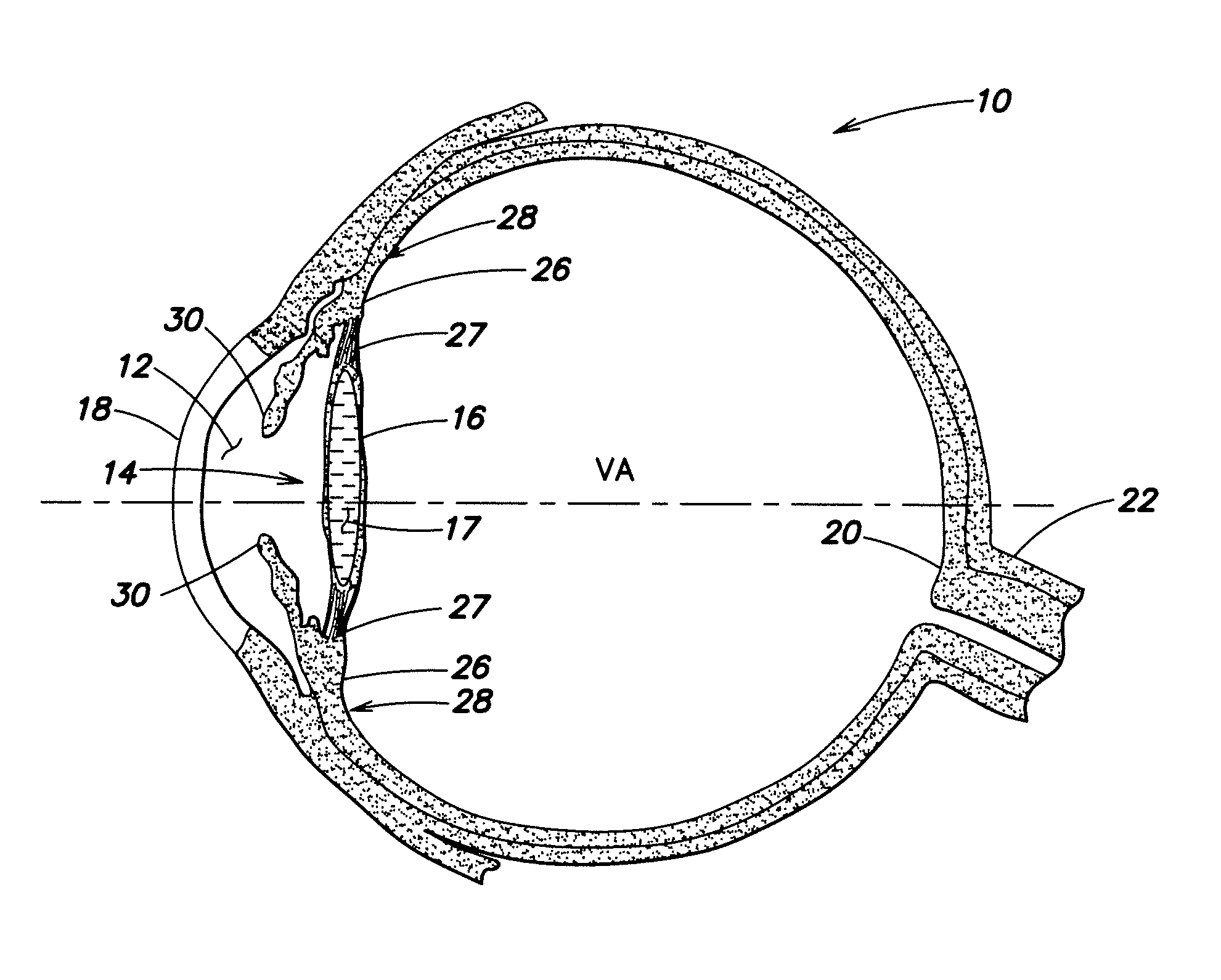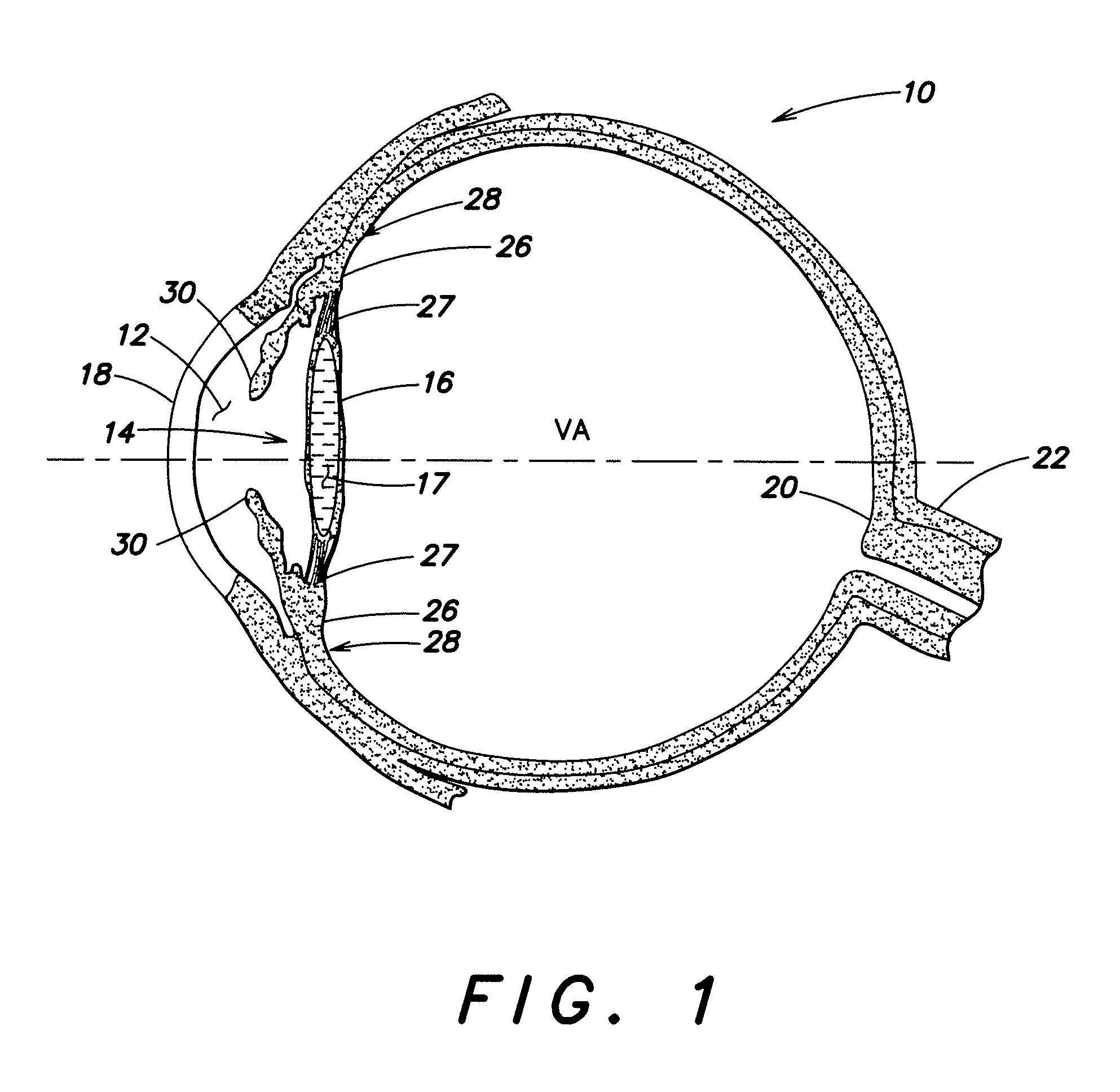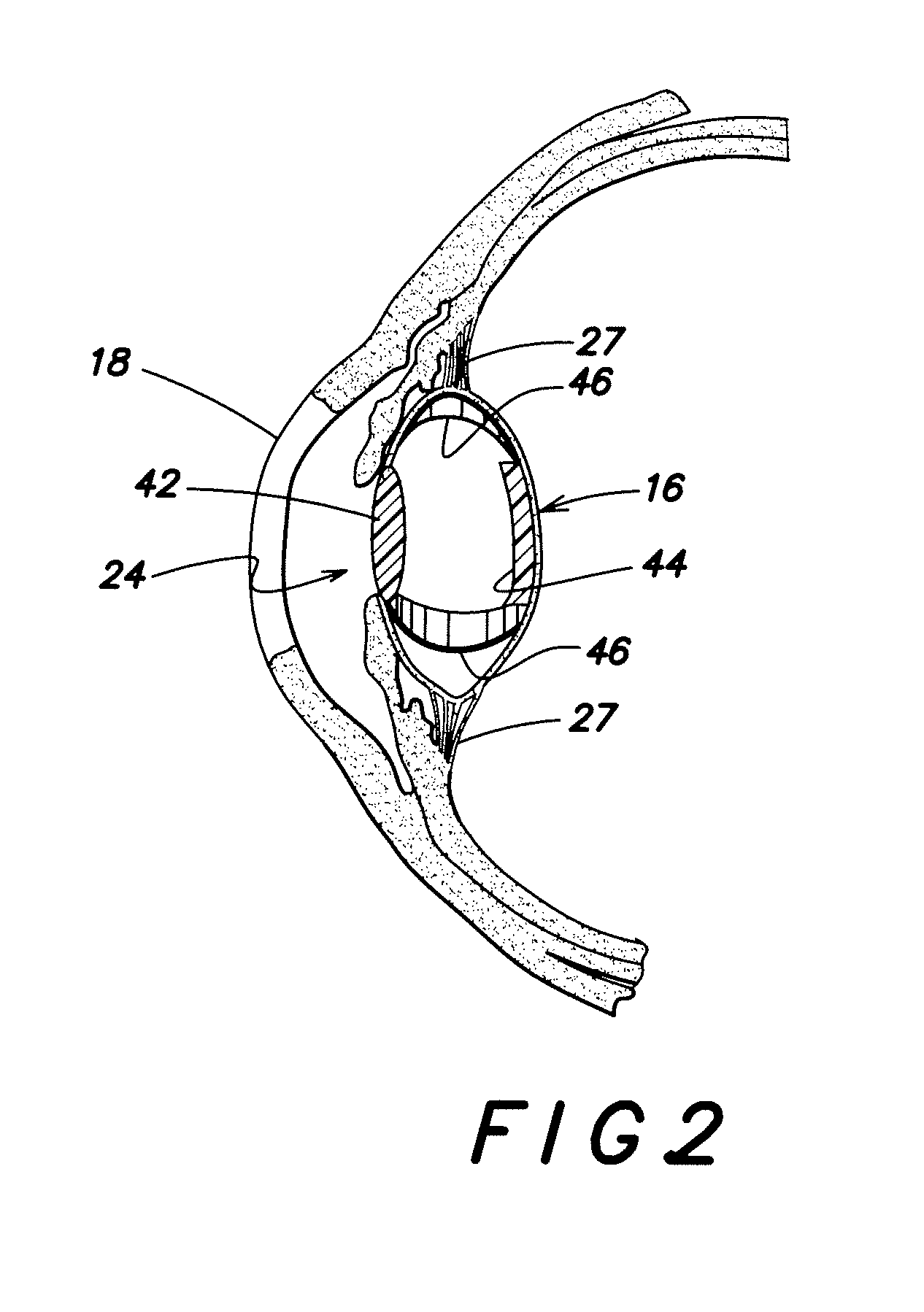Multi-element accommodative intraocular lens
a multi-element, intraocular lens technology, applied in intraocular lens, prosthesis, medical science, etc., can solve the problems of natural lens not being able to properly focus and/or direct incoming light to the retina, image blur, at least partially incorrect assumption, etc., to achieve better resistance and more translation of lenses
- Summary
- Abstract
- Description
- Claims
- Application Information
AI Technical Summary
Benefits of technology
Problems solved by technology
Method used
Image
Examples
Embodiment Construction
[0023]FIG. 3 is a perspective view of a multi-element AIOL 140 according to aspects of the present invention. AIOL 140 comprises an anterior portion 150 and a posterior portion 160.
[0024]The anterior portion comprises an anterior optical element 152, a first anterior translation member 154 coupled to the anterior optical element at a first attachment location 155, and a second anterior translation member 156 coupled to the anterior optical element at a second attachment location 157.
[0025]The posterior portion comprises a posterior optical element 162, a first posterior translation member 164 coupled to the posterior optical element at a third attachment location 165, and a second posterior translation member 166 coupled to the posterior optical element at a fourth attachment locations 167.
[0026]The first anterior translation member and first posterior translation member are connected together to form a first bias element 170, and the second anterior translation member and second po...
PUM
 Login to View More
Login to View More Abstract
Description
Claims
Application Information
 Login to View More
Login to View More - R&D
- Intellectual Property
- Life Sciences
- Materials
- Tech Scout
- Unparalleled Data Quality
- Higher Quality Content
- 60% Fewer Hallucinations
Browse by: Latest US Patents, China's latest patents, Technical Efficacy Thesaurus, Application Domain, Technology Topic, Popular Technical Reports.
© 2025 PatSnap. All rights reserved.Legal|Privacy policy|Modern Slavery Act Transparency Statement|Sitemap|About US| Contact US: help@patsnap.com



